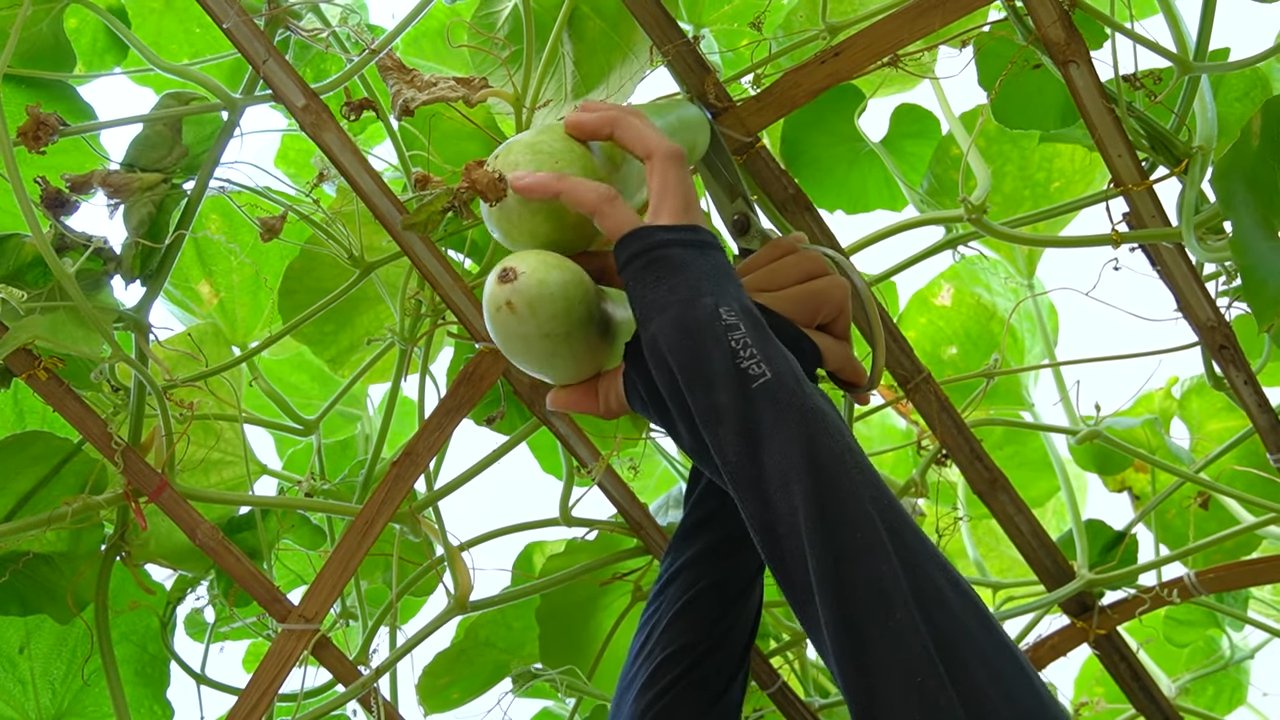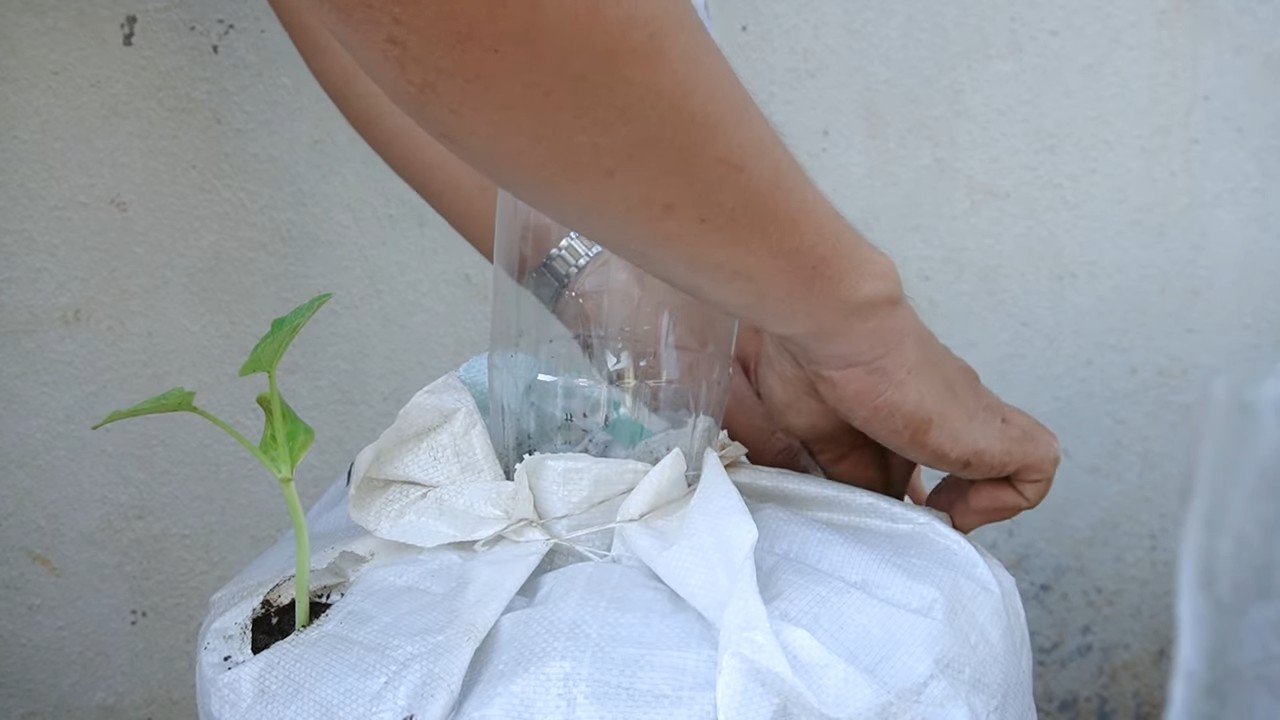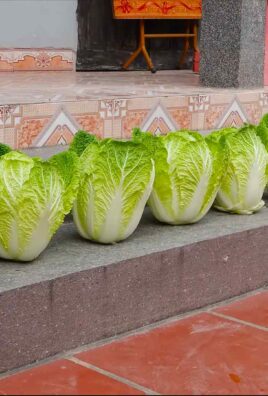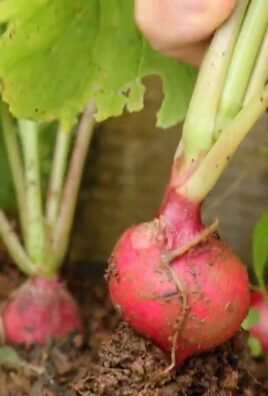Grow Gourds at Home and unlock a world of creativity right in your backyard! Have you ever imagined crafting your own unique birdhouses, bowls, or even musical instruments from something you grew yourself? It’s not just a dream; it’s entirely possible, and incredibly rewarding. For centuries, gourds have held a special place in cultures around the globe, serving as essential tools, decorative items, and even symbols of prosperity. From ancient civilizations using them as water containers to modern artisans transforming them into stunning works of art, the humble gourd boasts a rich and fascinating history.
But why should you consider growing gourds at home? In today’s world, where sustainability and DIY projects are gaining immense popularity, cultivating your own gourds offers a fantastic opportunity to connect with nature, reduce waste, and unleash your inner artist. Plus, let’s be honest, there’s something incredibly satisfying about nurturing a plant from seed to harvest and then transforming its fruit into something beautiful and functional. This DIY guide will provide you with all the essential tricks and hacks you need to successfully grow gourds at home, even if you’re a complete beginner. Get ready to embark on a fun and fulfilling gardening adventure!

Growing Gourds: A Comprehensive DIY Guide
Hey there, fellow gardening enthusiasts! I’m so excited to share my experiences and tips on growing gourds. It’s a rewarding and surprisingly easy project that adds a unique touch to your garden and provides you with materials for crafting and decorating. Let’s dive in!
Choosing Your Gourd Variety
First things first, you need to decide what kind of gourd you want to grow. There are two main categories: ornamental gourds and hard-shelled gourds.
* Ornamental Gourds: These are the colorful, oddly shaped gourds you often see in fall decorations. They’re generally smaller and come in a wide variety of shapes, sizes, and colors. They’re not typically edible, but they’re fantastic for crafts.
* Hard-Shelled Gourds: These gourds, like birdhouse gourds and dipper gourds, have a thick, hard shell when dried. They take longer to mature and dry, but they’re incredibly durable and versatile.
Consider what you want to use your gourds for before making your choice. I personally love growing birdhouse gourds because I enjoy providing homes for our feathered friends.
Preparing Your Gourd-Growing Paradise
Gourds are hungry plants, so soil preparation is key. They need plenty of sunlight and well-drained soil.
* Sunlight: Gourds need at least 6-8 hours of direct sunlight per day. Choose a location in your garden that gets plenty of sun.
* Soil: Gourds thrive in rich, well-drained soil. Amend your soil with plenty of compost or well-rotted manure before planting. This will provide the nutrients your gourds need to grow strong and healthy.
* Space: Gourds are vines, and they need plenty of space to spread out. If you’re growing them on the ground, give them at least 4-6 feet of space between plants. If you’re growing them on a trellis, make sure the trellis is sturdy enough to support the weight of the mature gourds.
Planting Your Gourd Seeds
Now for the fun part: planting! You can either start your gourd seeds indoors or direct sow them in your garden.
* Starting Seeds Indoors: This is a good option if you live in a cooler climate with a shorter growing season. Start your seeds about 4-6 weeks before the last expected frost.
* Use peat pots or biodegradable pots to avoid disturbing the roots when transplanting.
* Sow the seeds about 1 inch deep.
* Keep the soil moist but not soggy.
* Provide plenty of light, either with a grow light or a sunny windowsill.
* Direct Sowing: If you live in a warmer climate with a longer growing season, you can direct sow your gourd seeds in your garden after the last frost.
* Prepare the soil as described above.
* Sow the seeds about 1 inch deep.
* Water well.
* Keep the soil moist until the seeds germinate.
Nurturing Your Gourd Vines
Once your gourd seedlings have emerged, it’s time to provide them with the care they need to thrive.
* Watering: Gourds need consistent watering, especially during hot, dry weather. Water deeply and regularly, but avoid overwatering, which can lead to root rot.
* Fertilizing: Feed your gourd plants with a balanced fertilizer every few weeks. You can also side-dress them with compost or well-rotted manure.
* Weeding: Keep the area around your gourd plants free of weeds. Weeds compete with your gourds for nutrients and water.
* Pest Control: Keep an eye out for pests like squash bugs, squash vine borers, and cucumber beetles. Handpick them off the plants or use an organic insecticide if necessary.
* Training the Vines: If you’re growing your gourds on a trellis, train the vines to climb the trellis. This will help to keep the gourds off the ground and prevent them from rotting.
Harvesting Your Gourds
The timing of your gourd harvest depends on the type of gourd you’re growing.
* Ornamental Gourds: Harvest ornamental gourds when the stems have dried and turned brown. The gourds should feel hard and lightweight.
* Hard-Shelled Gourds: Harvest hard-shelled gourds when the stems have completely dried and turned brown. The gourds should feel very hard and lightweight. This usually happens after a frost.
Use pruning shears or a sharp knife to cut the gourds from the vine, leaving a few inches of stem attached.
Drying Your Gourds: The Patience Game
Drying is crucial for preserving your hard-shelled gourds. This process can take several weeks or even months, so patience is key!
1. Washing: Gently wash the gourds with soapy water to remove any dirt or debris.
2. Drying Location: Find a well-ventilated, dry place to dry your gourds. A shed, garage, or attic works well. Avoid direct sunlight, which can cause the gourds to crack.
3. Arranging: Place the gourds on a wire rack or hang them individually, making sure they don’t touch each other. This will allow air to circulate around them and prevent mold from growing.
4. Waiting (and Watching): Check the gourds regularly for signs of mold or rot. If you see any, wipe it off with a solution of bleach and water (1 part bleach to 10 parts water).
5. The Shaking Test: After several weeks, you should start to hear the seeds rattling inside the gourds. This is a sign that they are drying properly.
6. Complete Drying: The gourds are completely dry when they are lightweight and the seeds rattle freely inside. This can take anywhere from a few weeks to several months, depending on the size and type of gourd.
Cleaning Your Dried Gourds: Getting Ready for Crafts
Once your gourds are completely dry, it’s time to clean them up and get them ready for crafting.
1. Soaking (Optional): If the outer skin is particularly dirty or moldy, you can soak the gourds in a tub of water for a few hours. This will soften the skin and make it easier to scrub off.
2. Scrubbing: Use a scrub brush or steel wool to remove the outer skin and any remaining dirt or debris. Be careful not to damage the hard shell underneath.
3. Bleaching (Optional): If you want to lighten the color of the gourds, you can bleach them with a solution of bleach and water (1 part bleach to 10 parts water). Soak the gourds in the solution for a few hours, then rinse them thoroughly with water.
4. Sanding: Use sandpaper to smooth out any rough spots or imperfections on the surface of the gourds.
5. Sealing (Optional): If you want to protect the gourds from moisture and prevent them from cracking, you can seal them with a clear sealant.
Crafting with Gourds: Unleash Your Creativity
Now that your gourds are clean and dry, it’s time to get creative! The possibilities are endless.
* Birdhouses: Drill a hole in the gourd and attach a perch to create a charming birdhouse.
* Bowls and Utensils: Cut the gourd in half and hollow it out to create a unique bowl or utensil.
* Musical Instruments: Use gourds to make rattles, drums, or other musical instruments.
* Decorations: Paint, carve, or decorate gourds to create festive decorations for your home.
* Lamps: Drill holes in the gourd and insert a light bulb to create a beautiful and unique lamp.
Troubleshooting: Common Gourd Growing Problems
Even with the best care, you may encounter some problems when growing gourds. Here are a few common issues and how to address them:
* Powdery Mildew: This fungal disease can cause a white, powdery coating on the leaves of your gourd plants. To prevent powdery mildew, provide good air circulation and avoid overhead watering. If you see signs of powdery mildew, treat the plants with a fungicide.
* Squash Bugs: These pests can suck the sap from your gourd plants, causing them to wilt and die. Handpick squash bugs off the plants or use an organic insecticide.
* Squash Vine Borers: These pests bore into the stems of your gourd plants, causing them to wilt and die. To prevent squash vine borers, wrap the base of the stems with aluminum foil or netting. If you see signs of squash vine borers, you can try to remove them by slitting the stem and pulling them out.
* Rotting Gourds: Gourds can rot if they are not properly dried or if they are exposed to too much moisture. To prevent rotting, make sure to dry your gourds in a well-ventilated

Conclusion
So, there you have it! Growing gourds at home isn’t just a fun gardening project; it’s a gateway to creativity, sustainability, and a deeper connection with nature. We’ve demystified the process, providing you with the knowledge and confidence to cultivate these fascinating fruits right in your own backyard. From selecting the right varieties to nurturing them through their growth cycle and finally harvesting your bounty, you’re now equipped to embark on this rewarding journey.
But why is this DIY trick a must-try? Because it offers so much more than just decorative items. It’s about experiencing the satisfaction of nurturing life from seed to harvest. It’s about creating unique, personalized crafts that reflect your individual style. It’s about reducing your reliance on mass-produced goods and embracing a more sustainable lifestyle. And, let’s be honest, it’s pretty darn cool to tell your friends and family that you grew those amazing birdhouses or bowls yourself!
Don’t be afraid to experiment with different gourd varieties. Try growing bottle gourds for crafting dippers or bowls, or explore the colorful world of ornamental gourds for stunning fall displays. Consider painting your dried gourds with vibrant colors and intricate designs, or use them to create musical instruments like rattles and drums. The possibilities are truly endless!
We encourage you to take the plunge and try growing gourds at home this season. Start small, learn as you go, and don’t be discouraged by initial setbacks. Gardening is a journey of discovery, and every mistake is an opportunity to learn and grow.
And most importantly, we want to hear about your experiences! Share your photos, tips, and stories with us in the comments below. Let’s create a community of gourd-growing enthusiasts and inspire others to discover the joy of this unique and rewarding hobby. What are you waiting for? Get those seeds started and prepare to be amazed by the magic of growing gourds at home!
Frequently Asked Questions (FAQs)
What are the best gourd varieties to grow for beginners?
For beginners, we recommend starting with smaller, easier-to-manage varieties like ornamental gourds or bottle gourds. Ornamental gourds are quick to mature and offer a wide range of shapes, sizes, and colors, making them perfect for decorative purposes. Bottle gourds are also relatively easy to grow and can be used to create a variety of crafts, such as birdhouses, bowls, and dippers. Avoid larger, more demanding varieties like bushel gourds until you have some experience under your belt. Remember to check your local climate and growing conditions to ensure you choose varieties that are well-suited to your area.
How much space do gourds need to grow?
Gourds are vigorous vines that require a significant amount of space to thrive. As a general rule, allow at least 6-8 feet between plants and rows. If you’re growing gourds on a trellis, make sure it’s sturdy enough to support the weight of the mature vines and fruits. Consider the mature size of the specific gourd variety you’re growing when determining spacing. Smaller ornamental gourds may require less space than larger bottle gourds or bushel gourds. Proper spacing is crucial for air circulation, which helps prevent fungal diseases.
What kind of soil do gourds prefer?
Gourds prefer well-drained, fertile soil that is rich in organic matter. Before planting, amend your soil with compost or well-rotted manure to improve its drainage and nutrient content. A slightly acidic to neutral soil pH (around 6.0 to 7.0) is ideal. Perform a soil test to determine your soil’s pH and nutrient levels, and adjust accordingly. Avoid planting gourds in heavy clay soil, as this can lead to root rot. If you have clay soil, consider growing gourds in raised beds or containers.
How often should I water my gourds?
Gourds need consistent moisture, especially during hot, dry weather. Water deeply and regularly, aiming to keep the soil consistently moist but not waterlogged. Check the soil moisture level regularly by sticking your finger into the soil. If the top inch of soil feels dry, it’s time to water. Avoid overhead watering, as this can promote fungal diseases. Instead, water at the base of the plants, using a soaker hose or drip irrigation system. During periods of heavy rainfall, you may need to reduce watering frequency.
When is the best time to harvest gourds?
Gourds are typically harvested in the fall, after the vines have died back and the gourds have fully matured. The exact timing will depend on the variety of gourd and your local climate. A good indicator of maturity is when the gourd’s stem turns brown and dry. The gourd should also feel hard and lightweight. Use pruning shears or a sharp knife to cut the gourds from the vine, leaving a few inches of stem attached. Avoid pulling the gourds off the vine, as this can damage the stem and increase the risk of rot.
How do I dry gourds properly?
Proper drying is essential for preserving gourds and preventing them from rotting. After harvesting, wash the gourds with soapy water and allow them to air dry completely. Place the gourds in a well-ventilated area, such as a garage or shed, and elevate them off the ground on racks or pallets. Avoid placing the gourds in direct sunlight, as this can cause them to crack. Turn the gourds regularly to ensure even drying. The drying process can take several weeks or even months, depending on the size and thickness of the gourds. You’ll know the gourds are dry when they feel lightweight and the seeds rattle inside.
How can I prevent pests and diseases from affecting my gourds?
To prevent pests and diseases, start by choosing disease-resistant gourd varieties. Practice good garden hygiene by removing weeds and debris from around the plants. Provide adequate spacing between plants to promote air circulation. Water at the base of the plants to avoid wetting the foliage. Inspect your plants regularly for signs of pests or diseases, such as aphids, squash bugs, or powdery mildew. Treat any infestations or infections promptly with appropriate organic or chemical controls. Crop rotation can also help prevent soilborne diseases.
Can I eat gourds?
While some gourds are edible when young, most ornamental and crafting gourds are not palatable and can even be toxic. It’s important to research the specific variety of gourd you’re growing to determine its edibility. If you’re unsure, it’s best to err on the side of caution and avoid eating them. Edible gourds, such as zucchini and squash, are typically harvested when they are young and tender.
How can I decorate my dried gourds?
The possibilities for decorating dried gourds are endless! You can paint them with acrylic paints, carve them with intricate designs, or embellish them with beads, shells, or other decorative materials. Consider using stencils or templates to create precise patterns. Seal your finished gourds with a clear coat of varnish or polyurethane to protect them from moisture and UV damage. Let your creativity run wild and create unique, personalized works of art!
Where can I find more information about growing gourds?
There are many resources available to help you learn more about growing gourds. Check your local library or bookstore for gardening books and magazines. Search online for articles, videos, and forums dedicated to gourd growing. Contact your local extension office for advice and resources specific to your area. Join a gourd society or club to connect with other gourd enthusiasts and share your experiences. The American Gourd Society is a great resource for information and support.




Leave a Comment